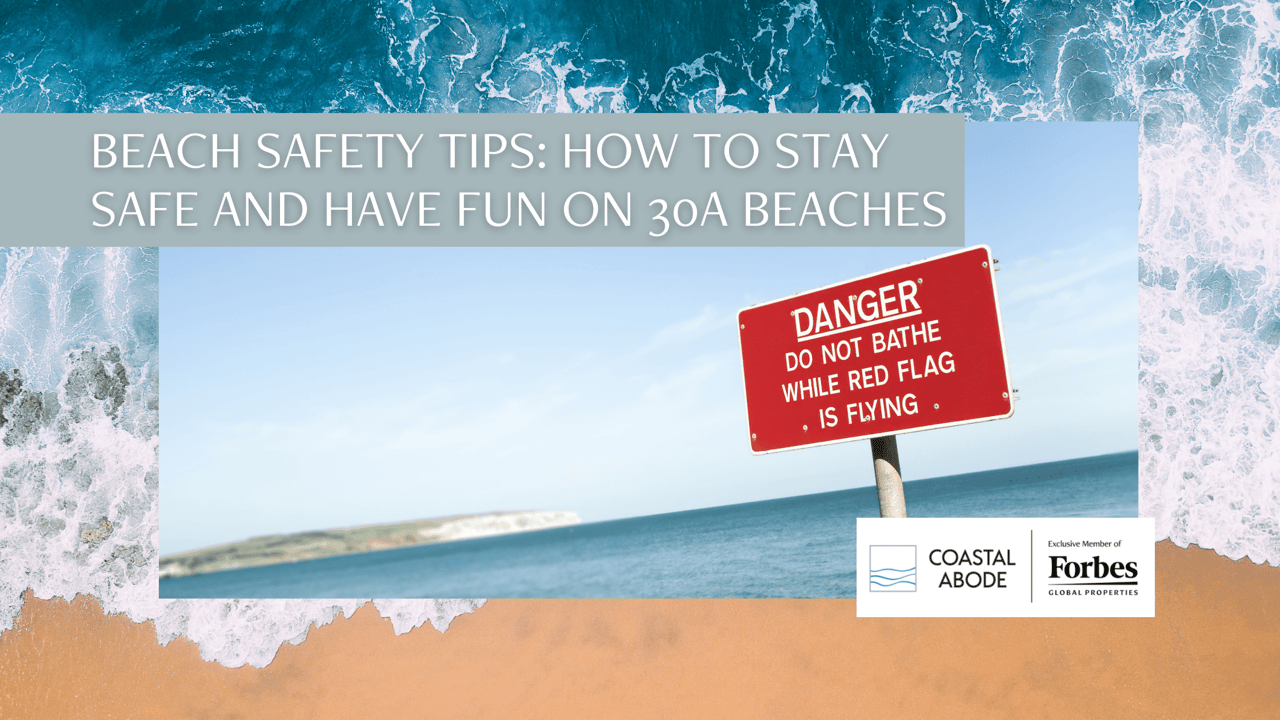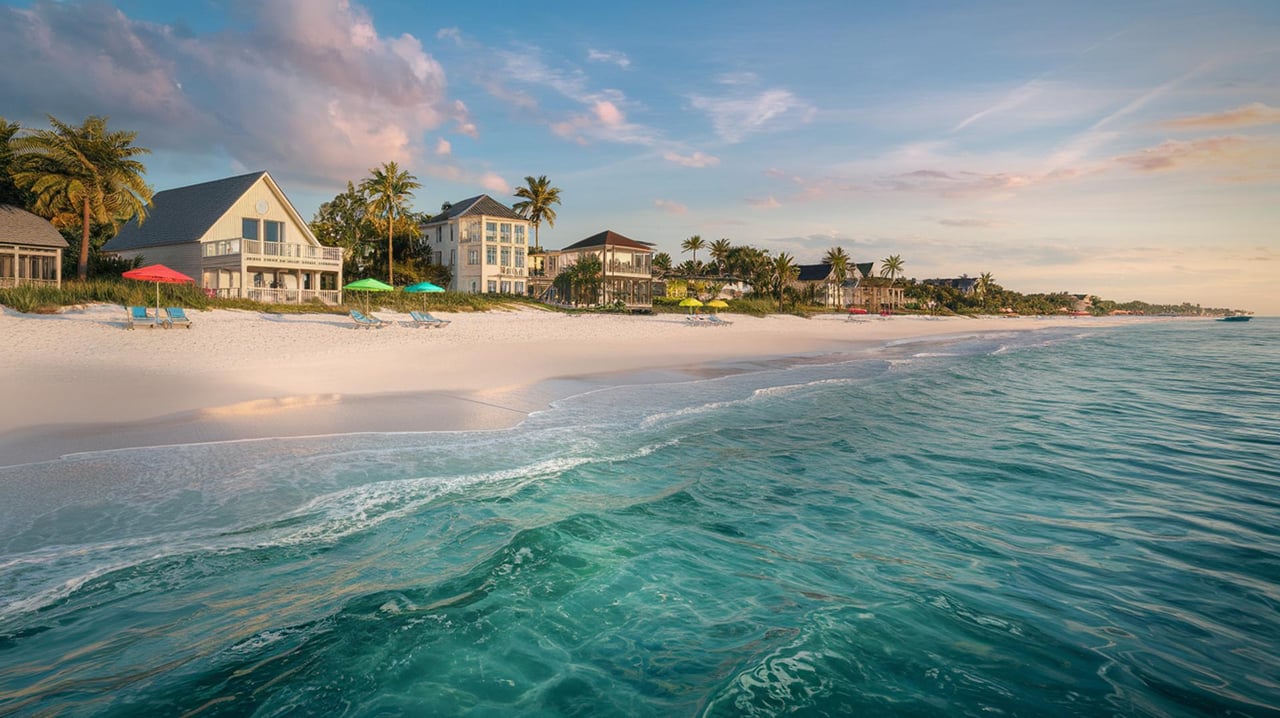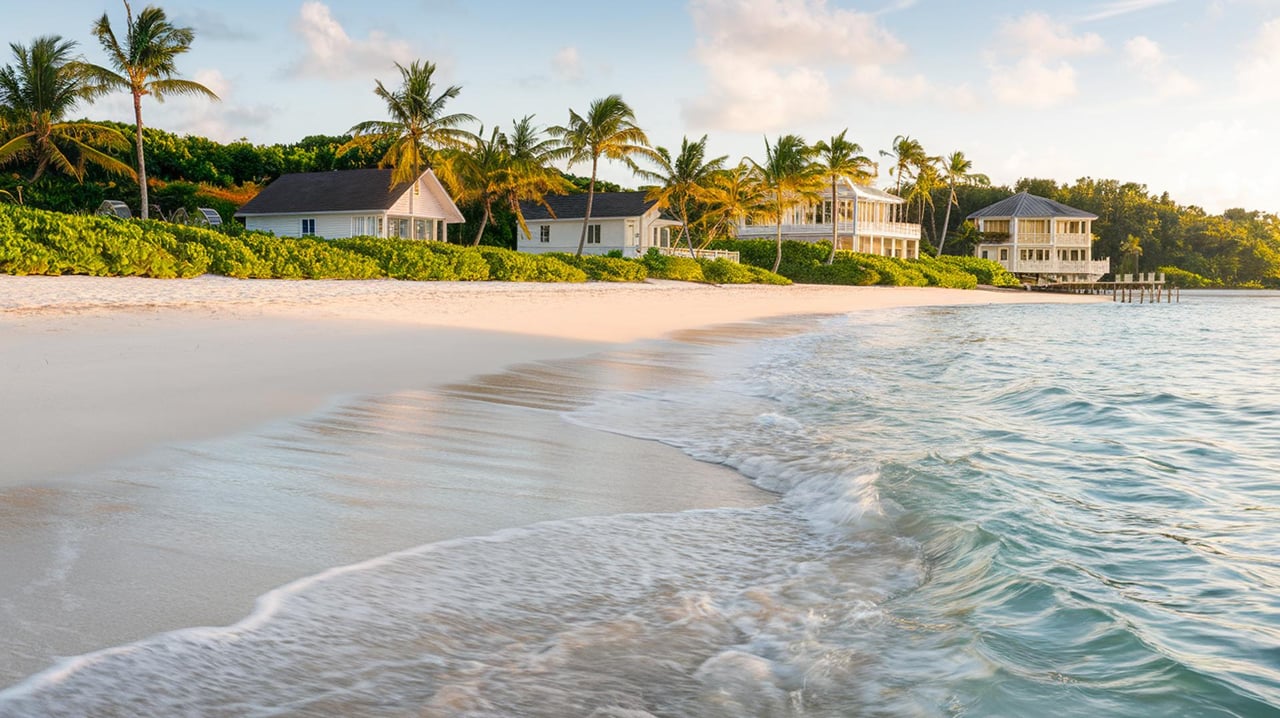The pristine beaches of 30A are a slice of paradise, attracting both locals and visitors alike. Stretching along the Emerald Coast, these beaches offer crystal-clear waters, sugar-white sand, and endless fun under the sun. However, with this natural beauty comes the responsibility of staying safe while enjoying your beach day. Whether you're swimming, lounging, or participating in water activities, here are essential beach safety tips to ensure your time on 30A's beaches is both fun and secure!
1. Pay Attention to Flag Warnings
30A beaches use a flag system to communicate the current surf conditions. These flags can help you assess whether it's safe to swim or if you should stay on the sand.
Green Flag: Low hazard, calm conditions, safe to swim.
Yellow Flag: Medium hazard, moderate surf or currents—use caution.
Red Flag: High hazard, strong currents, and dangerous surf—stay out of the water.
Double Red Flag: Water is closed to the public.
Purple Flag: Marine life hazard (e.g., jellyfish or sharks).
Always check the flag system at the beach entrance or online before heading out. The Gulf’s currents can change quickly, so being aware of these warnings can save lives.
2. Swim Near Lifeguards
Whenever possible, swim at beaches with lifeguards on duty. Lifeguards are trained to spot dangers like rip currents and can assist quickly in an emergency. On 30A, there are designated lifeguard stations from March through October, especially in popular spots like Seaside and Rosemary Beach. It’s always safer to be in proximity to trained professionals while swimming or enjoying the surf.
3. Understand Rip Currents
Rip currents are one of the biggest threats to swimmers, and they can form even on seemingly calm days. A rip current is a strong, narrow current that pulls swimmers away from the shore.
What to do if caught in a rip current:
Don’t panic. Keep calm and conserve energy.
Don’t swim against the current. Instead, swim parallel to the shore until you're out of the current, then swim back to shore.
Float or tread water. If you're too tired to swim, floating can help you conserve energy until help arrives.
4. Hydrate and Use Sun Protection
A fun day at the beach can quickly turn uncomfortable if you don’t protect yourself from the sun and heat. Here’s how to stay safe:
Sunscreen: Use a reef-safe, broad-spectrum sunscreen with at least SPF 30, and reapply every two hours, especially after swimming or sweating.
Hydrate: Dehydration is common at the beach due to the sun and physical activity. Bring plenty of water and sip it frequently throughout the day.
Seek Shade: Take breaks from direct sunlight by bringing an umbrella, hat, or spending time under beach cabanas to prevent heat exhaustion or sunburn.
5. Watch Out for Marine Life
While encountering marine life can be exciting, it’s essential to be cautious. In 30A, jellyfish stings can be a common concern, especially during purple flag days. If stung, rinse the area with saltwater and remove any stingers. Vinegar or baking soda can help neutralize the sting, but seek medical attention if the reaction is severe. Additionally, avoid feeding or approaching wildlife, like seabirds or fish, as it can disrupt the local ecosystem.
6. Know the Local Rules
Each beach along 30A may have its own rules regarding beach equipment, pets, and bonfires. Always check local ordinances before setting up a tent, walking your dog, or starting a fire. Following these rules helps preserve the natural beauty of the area while ensuring a safe and enjoyable experience for everyone.
7. Stay Aware of Weather Conditions
Weather on the Gulf Coast can be unpredictable. Before heading out to the beach, check the forecast for thunderstorms or lightning, as these can appear suddenly, especially in the afternoon. If you hear thunder or see lightning, it’s time to leave the beach immediately and seek shelter indoors.
8. Pack a Beach Safety Kit
A beach safety kit can come in handy for minor issues. Here's what to include:
Band-aids and antiseptic for cuts or scrapes.
Aloe vera for sunburn relief.
Sting-relief wipes for jellyfish or insect stings.
A whistle for emergencies to get attention.
Final Thoughts
Staying safe while enjoying the breathtaking beauty of 30A beaches is essential for a fun and memorable experience. By being aware of your surroundings, understanding local conditions, and taking proactive measures, you can fully enjoy everything these stunning beaches have to offer. Remember that safety doesn’t have to take away from the fun; it enhances it! So gather your family and friends, grab your beach gear, and prepare for an unforgettable adventure along 30A. Whether you're catching waves, building sandcastles, or soaking in the sun, with these tips in mind, you're set for an amazing day by the water.




